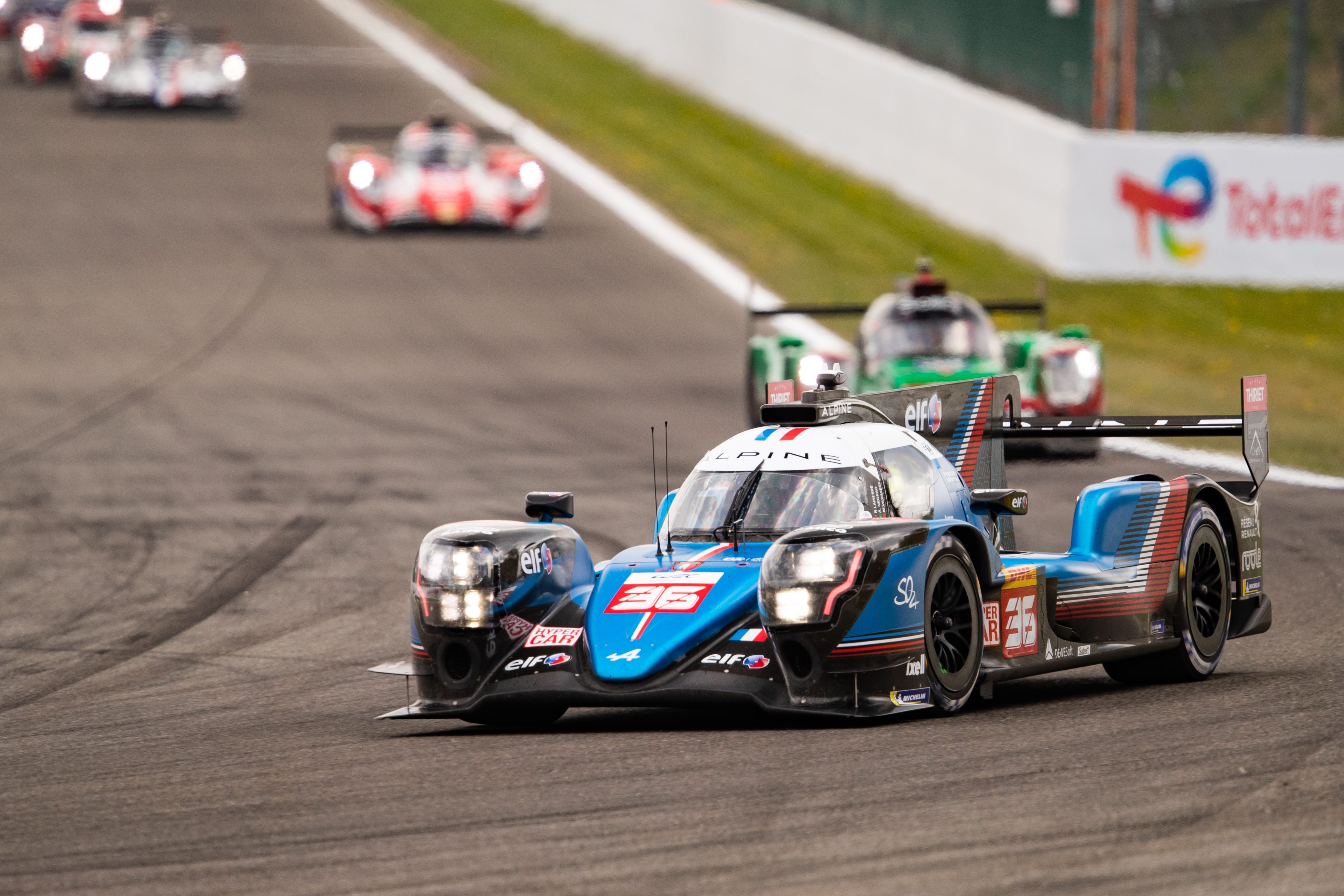Pressiteade

"In endurance racing, reliability comes first. Acar that doesn't finish the race is useless!"
DavidVincent, Alpine Elf Endurance Team Director of Operations
Twokey parameters
A stickler for detail, the team’s operations chief David Vincent will pointout that there have been the odd hiccoughs. However, even the setback thatslowed Nicolas Lapierre, Matthieu Vaxiviere and André Negrãoin the searing heat of Bahrain in 2021 failed to prevent the trio from reachingthe chequered flag on the podium.
Clearly, such a high level of reliability isn’t merely a question of luck.On the contrary, it stems from two fundamental factors: the car’s excellent designand the meticulous attention the team pays to operational matters.
Varying levels of punishment
Not all the circuits visited by the FIA World EnduranceChampionship calendar make the same demands ofthe car’s mechanicals. Take Sebring, for example, which hosted Round 1 of this year’s series that Alpinewon in March. “Sebring’s exceptionallybumpy surface makes it the most demanding venue of the season,” observes DavidVincent. “It’s always tricky to kick off the season there because an eight-hourrace at Sebring is equivalent to 24 hours at Le Mans when it comes to reliability.Obviously,the parts we run at Sebring are nearly all replaced afterwards,whereas we might re-employ a number of components after Le Mans.”
Efficient parts management is effectively one of thekeys to good reliability. “All the components we receive are registered usinga barcode or an etched reference number so that we can track them and pinpoint theprecise distance they have covered in the course of their working life,” continuesDavid Vincent. “To maximise reliability, their use is carefully planned. Apart that has been raced may be fitted subsequently at a test, but we rarelytake the risk of racing the same component twice.”
That said, the car isn’t necessarily made up entirelyof brand-new parts at the start of every race. “There are occasions when we will run a pre-used component. Indeed, therecan be circumstances where we prefer to use a part that has been signed off in testing– or even previously raced – rather than switch to a new one.”
Le Mans - The ultimate test
Le Mans is clearly a one-off challenge… “It’s therace’s duration that makes it so hard, because the track isn’t all thatpunishing in itself. Also, our car was designed from the outset to go the distancewithout any issues. In theory, once the race has started, our job is simply toadd fuel and bolt on fresh tyres.”
Endurance races have become more like sprints today,however, which means hopes of a strong result can be dashed if mechanical workon the car proves necessary. Thanks to telemetry, though, the team’s engineersare able to monitor the A480 permanently in real time: “There are certain aspectsof our prototype we watch over more than others, such as its electronic systemswhich tend to be the most fragile aspect nowadays,” says David Vincent. “Ninetimes out of 10, if we have a problem during a race, it will be electronics-related.”
Certain mechanical components tend to be more exposed atLe Mans. They include the gearbox and brakes which notably have to cope with constraintsresulting from the regulation that obliges the Alpine A480 to carry asignificant amount of ballast, in addition to its intrinsic weight. Brakes are clearlycrucial to both performance and driver safety, so the carbon discs, callipersand pads are engineered with a view to avoiding their replacement in the courseof endurance racing’s 24-hour showpiece.
Pre-determined racing lines
Before races, the drivers complete a recce lap of thetrack by foot and inspect every corner in the company of their engineers. “Theydiscuss which lines are to be preferred and which ones should be avoided, or whetherto ride or steer clear of a given kerb in order to spare the suspension, chassis,etc.”
But even the best-laid plans can occasionally be upsetby unforeseen circumstances like poor weather, a Safety Car interruption or anaccident. Here again, though, the team is ready to do whatever it takes to getthe car to the finish. “In the cases where we need to work on the car aftera tangle, say, all the back-up parts are pre-prepared. The replacement sub-assembliesare ready in plug-and-play mode to be fitted in the shortest time as possible,”concludes David Vincent.
Let’s hope that such interventions won’t be necessaryon the weekend of June 11-12 and that the #36 Alpine A480 will run likeclockwork not only at Le Mans, but also at all the other remaining rounds ofthe world championship!
Kõik sellel veebilehel olevad materjalid (sealhulgas, kuid mitte ainult: tekstid, fotod, graafika, helifailid, animatsioonifailid, videofailid ja nende paigutus veebilehel) on Renault SASi ja/või selle sidusettevõtete või kolmandate isikute omand, kes on volitanud Renault SASi nende piiratud kasutamiseks, ning on kaitstud autoriõiguse ja muude intellektuaalomandi kohta kehtivate õigusnormidega. Eespool nimetatud materjalide kasutamine muudel kui toimetuslikel eesmärkidel, eelkõige turundus- või reklaamieesmärkidel, on rangelt keelatud.
.jpg) The Alpine A480: Reliability, a must!
The Alpine A480: Reliability, a must!
.jpg) The Alpine A480: Reliability, a must!
The Alpine A480: Reliability, a must!
.jpg) The Alpine A480: Reliability, a must!
The Alpine A480: Reliability, a must!
.jpg) The Alpine A480: Reliability, a must!
The Alpine A480: Reliability, a must!
.jpg) The Alpine A480: Reliability, a must!
The Alpine A480: Reliability, a must!
.jpg) The Alpine A480: Reliability, a must!
The Alpine A480: Reliability, a must!
.jpg) The Alpine A480: Reliability, a must!
The Alpine A480: Reliability, a must!
.jpg) The Alpine A480: Reliability, a must!
The Alpine A480: Reliability, a must!
.jpg) The Alpine A480: Reliability, a must!
The Alpine A480: Reliability, a must!
.jpg) The Alpine A480: Reliability, a must!
The Alpine A480: Reliability, a must!
.jpg) The Alpine A480: Reliability, a must!
The Alpine A480: Reliability, a must!